This article was co-authored by Siddharth Tambar, MD and by wikiHow staff writer, Janice Tieperman. Dr. Siddharth Tambar, MD is a board certified rheumatologist at Chicago Arthritis and Regenerative Medicine in Chicago, Illinois. With over 19 years of experience, Dr. Tambar specializes in Regenerative Medicine and Rheumatology, with a focus on platelet rich plasma and bone marrow derived stem cell treatments for arthritis, tendinitis, injuries, and back pain. Dr. Tambar holds a BA in Economics from State University of New York at Buffalo. He earned his MD from State University of New York at Syracuse. He completed his Internship, Residency in Internal Medicine, and his Rheumatology Fellowship at Northwestern Memorial Hospital. Dr Tambar is board certified in both rheumatology and internal medicine. He also holds Musculoskeletal Ultrasound Diagnostic and Interventional certifications from the American College of Rheumatology and the American Institute of Ultrasound in Medicine.
There are 18 references cited in this article, which can be found at the bottom of the page.
This article has been viewed 24,914 times.
Few things are worse than a rough, restless night of sleep, especially if you have sacroiliac joint (SI) pain. How are you supposed to fall asleep quickly and comfortably without worrying about any flare-ups? Don’t lose hope just yet. We’ve put together plenty of medically approved tips and tricks to help you catch some easy, pain-free zzzs.
Steps
Switch to sleeping on your side.
-
Lie on your preferred side with a pillow stuffed between your legs. Tuck your legs a tiny bit toward your chest and slip a regular-sized pillow between your thighs, knees, and lower legs—this helps take a little pressure off your back, which may contribute to your pain. [1] X Trustworthy Source Mayo Clinic Educational website from one of the world's leading hospitals Go to source
- Feel free to try this out with a body pillow instead of a regular one.
Prop a pillow under your knees if you’re a back sleeper.
-
Sleeping flat may not support your back’s natural curve. As you climb into bed, prop 1 pillow beneath your head and another directly beneath your knees. Then, slip a rolled-up towel beneath your lower back if you’d like a little extra support.[2] X Trustworthy Source Mayo Clinic Educational website from one of the world's leading hospitals Go to source
Sleep on top of a pillow if you’re a stomach sleeper.
-
Stomach sleeping isn’t great for back pain, but there are workarounds. Experts suggest slipping a second pillow directly under your hips and stomach, which may help take away some of the pressure.[3] X Trustworthy Source Mayo Clinic Educational website from one of the world's leading hospitals Go to source
- If you still feel achy, try sleeping without a pillow beneath your head—that could also ease some extra strain!
Switch to a supportive pillow.
-
Tall, stiff pillows definitely won’t help with your SI joint pain. Instead, try out a squishy pillow that fully supports your head and neck. Pillows stuffed with memory foam or feathers are great options to try!
- You can get a memory foam pillow for as low as $30.
- Cheap feather pillows go for anywhere between $27 and $33.
Upgrade to a semi-firm mattress.
-
A saggy mattress can add to your back pain. If your sleeping throne has seen better days, it might be time for an upgrade. Shop for mattresses with a medium-firm rating, which may help prevent lower back pain throughout the night.[4] X Research source
- Keep in mind that mattress firmness is very subjective. Different elements can make a mattress more or less comfortable, like your body shape, weight, and overall sleeping preferences.
Create a consistent sleep routine.
-
Transform your bedroom into a cozy sleep sanctuary. SI joint pain can be tough enough to handle on its own, so a good sleeping environment can make all the difference![5] X Trustworthy Source Cleveland Clinic Educational website from one of the world's leading hospitals Go to source Shut off the lights and switch off anything loud, like your television. While you’re at it, make sure that your thermostat is set to a comfy temperature.[6] X Trustworthy Source Cleveland Clinic Educational website from one of the world's leading hospitals Go to source
- Try not to drink alcoholic or caffeinated beverages close to bedtime. These types of drinks can really mess with your sleep quality.
Stretch before bed.
-
Certain stretches may help ease some of your SI joint pain. Don’t worry—these stretches are very quick, and shouldn’t take more than a few minutes to complete. Here are a couple of options that you can try before hitting the hay:[7] X Research source https://www.newportortho.com/images/system/blog/safman-blog[1].jpg
- Lumbar side-bend pushup: Roll out a yoga mat or towel and sprawl out on your side, propping yourself with your forearm. Tuck your knees back at around 45 degrees and rest your free hand on your upper hip. Then, anchor your knee and lower leg before lifting your hip off the ground and lowering it back down. Repeat this exercise for about 1 minute, doing a single rep every 4 seconds. Take a breather for a minute, and then do the same stretch on your opposite side.
- Bent knee raise: Find a comfortable spot where you can lie flat on your back with both knees bent. Tighten your belly and pretend that you’re pulling your belly button beneath your ribs. While keeping your abs tight, raise 1 leg up in the air, keeping your knee bent at a 90-degree angle. Then, bend your other leg at the same angle and lift it up. Stay in this position for up to 10 seconds before bringing your legs down separately. Feel free to do up to five 1-minute sets, spacing out each rep by 4 seconds.
Ice the area before bed for 20 minutes.
-
Ice can provide some quick relief for your SI joint pain. Grab an ice pack and wrap it up in a towel, so the pack doesn’t touch your skin. Before you head to bed, rest the ice along your lower back or upper bum area for 20 minutes, which should help ease some of the pain.[8] X Trustworthy Source MedlinePlus Collection of medical information sourced from the US National Library of Medicine Go to source
- Feel free to apply ice throughout the day, too! Experts suggest icing your SI joint up to 2-3 times each day.
- Bags of frozen veggies can work in a pinch if you don’t have any ice packs on hand. You can also make a homemade ice pack by freezing 3 cups (709.78 mL) of water and 1 cup (236.59 mL) of denatured alcohol in a freezer-proof bag together.[9] X Research source
Lie on a low-temperature heating pad.
-
A little bit of heat may soothe the achy muscles around your SI joint. Plug in your heating pad, making sure the temperature is as low as possible.[10] X Trustworthy Source MedlinePlus Collection of medical information sourced from the US National Library of Medicine Go to source Then, rest on the heating pad for about 20 minutes to help ease away the pain. Don’t forget to unplug it before falling asleep![11] X Research source
- Experts suggest switching between ice and heat to help ease SI joint pain.[12] X Trustworthy Source Mayo Clinic Educational website from one of the world's leading hospitals Go to source
Take deep breaths.
-
The right breathing techniques can make a big difference in your joint pain. When the pain flares up, it can be really tempting to take short, quick breaths. Unfortunately, this won’t help you in the long run, since fast breathing may actually leave you dizzy, panicky, and unsettled.[13] X Trustworthy Source National Health Service (UK) Public healthcare system of the UK Go to source Try breathing deeply and slowly instead—studies show that deep breathing techniques can help with your pain.[14] X Trustworthy Source PubMed Central Journal archive from the U.S. National Institutes of Health Go to source Here are a couple deep breathing exercises for you to try:[15] X Research source
- Belly breathing: Rest one hand on your stomach and another hand on the center of your chest. Focus on breathing deeply through your nose, letting the air push your stomach upward. Then, let the air out through your mouth with your lips pursed, using your hand to help get rid of the remaining air in your belly. Repeat this technique at least 3 times.
- 4-7-8 breathing: Place one hand on your chest and another on top of your belly. Breathe in slowly for 4 seconds, and then hold it for 7 seconds. Afterward, exhale for 8 seconds. Feel free to repeat this exercise up to 7 times.
Try over-the-counter (OTC) painkillers.
-
Long-term painkillers are your best bet for frequent SI joint pain. All OTC pain meds can definitely help with your pain management, but long-lasting meds like naproxen (Aleve) can keep you pain-free throughout the night.[16] X Trustworthy Source Cleveland Clinic Educational website from one of the world's leading hospitals Go to source Here are some adult dosage tips to keep in mind:
- Acetaminophen: Up to 1000 mg per dose, up to 4000 mg in 24 hours[17] X Research source
- Ibuprofen: Up to 800 mg per dose, up to 3200 mg in 24 hours[18] X Research source
- Aspirin: Between 300 and 650 mg per dose in a 4-6 hour window; up to 4 g in 24 hours[19] X Research source
- Naproxen: 550 mg for the first dose, supplemented with 275 mg once every 6-8 hours; up to 1375 mg in 24 hours[20] X Research source
Ask your doctor about joint injections.
-
Joint injections may help if you’re officially diagnosed with an inflamed SI joint. With this treatment, your doctor will give you a steroid injection directly in your SI joint, which may calm down some of the inflammation. Unfortunately, steroids diminish your tendons and bones, so you can’t get this type of shot very often.[21] X Trustworthy Source Mayo Clinic Educational website from one of the world's leading hospitals Go to source [22] X Expert Source

Board Certified Rheumatologist Expert Interview. 25 August 2020.- If SI joint pain is really interfering with your quality of life, chat with your doctor about other treatment options, like radiofrequency denervation, electrical stimulation, or joint fusion surgery.
You Might Also Like














References
- ↑ https://www.mayoclinic.org/diseases-conditions/back-pain/multimedia/sleeping-positions/sls-20076452
- ↑ https://www.mayoclinic.org/diseases-conditions/back-pain/multimedia/sleeping-positions/sls-20076452?s=2
- ↑ https://www.mayoclinic.org/diseases-conditions/back-pain/multimedia/sleeping-positions/sls-20076452?s=3
- ↑ https://www.sleepfoundation.org/physical-health/how-to-sleep-with-lower-back-pain
- ↑ https://health.clevelandclinic.org/how-to-keep-sore-hips-knees-shoulders-from-ruining-your-sleep/
- ↑ https://my.clevelandclinic.org/health/articles/12148-sleep-basics
- ↑ https://www.newportortho.com/images/system/blog/safman-blog[1].jpg
- ↑ https://medlineplus.gov/ency/patientinstructions/000610.htm
- ↑ https://www.uofmhealth.org/health-library/hw47901
- ↑ https://medlineplus.gov/ency/patientinstructions/000610.htm
- ↑ https://www.uofmhealth.org/health-library/hw47901
- ↑ https://www.mayoclinic.org/diseases-conditions/sacroiliitis/diagnosis-treatment/drc-20350751
- ↑ https://www.nhs.uk/live-well/healthy-body/10-ways-to-ease-pain/
- ↑ https://pubmed.ncbi.nlm.nih.gov/21939499/
- ↑ https://www.uofmhealth.org/health-library/uz2255
- ↑ https://my.clevelandclinic.org/health/diseases/17736-sacroiliitis
- ↑ https://www.drugs.com/acetaminophen.html
- ↑ https://www.drugs.com/ibuprofen.html
- ↑ https://www.drugs.com/dosage/aspirin.html
- ↑ https://www.drugs.com/dosage/naproxen.html#Usual_Adult_Dose_for_Pain
- ↑ https://www.mayoclinic.org/diseases-conditions/sacroiliitis/diagnosis-treatment/drc-20350751
- ↑ Siddharth Tambar, MD. Board Certified Rheumatologist. Expert Interview. 25 August 2020.



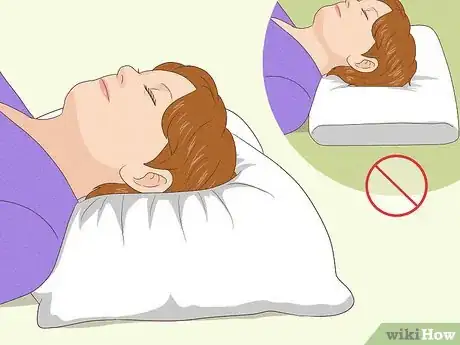
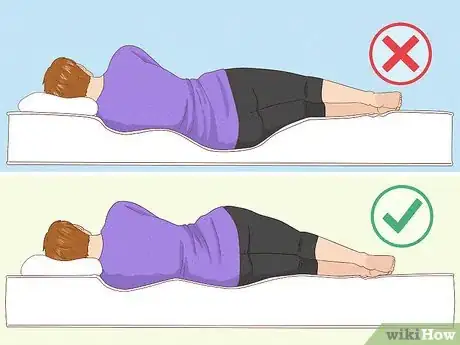


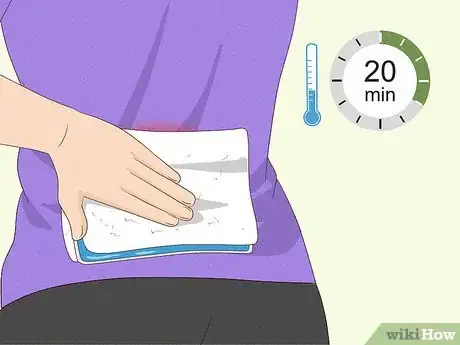


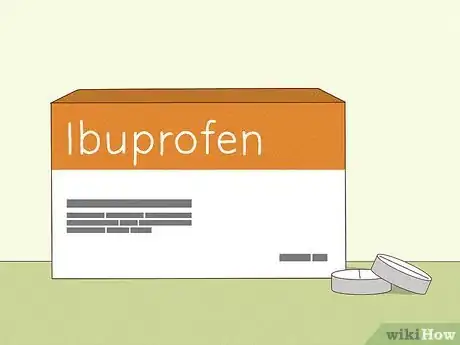
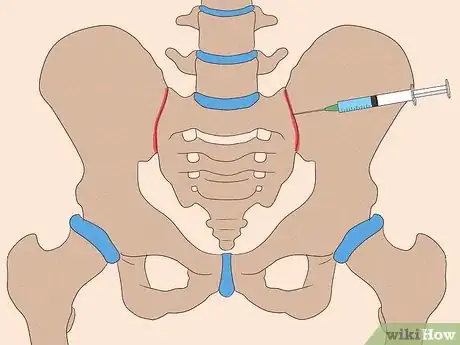













































Medical Disclaimer
The content of this article is not intended to be a substitute for professional medical advice, examination, diagnosis, or treatment. You should always contact your doctor or other qualified healthcare professional before starting, changing, or stopping any kind of health treatment.
Read More...